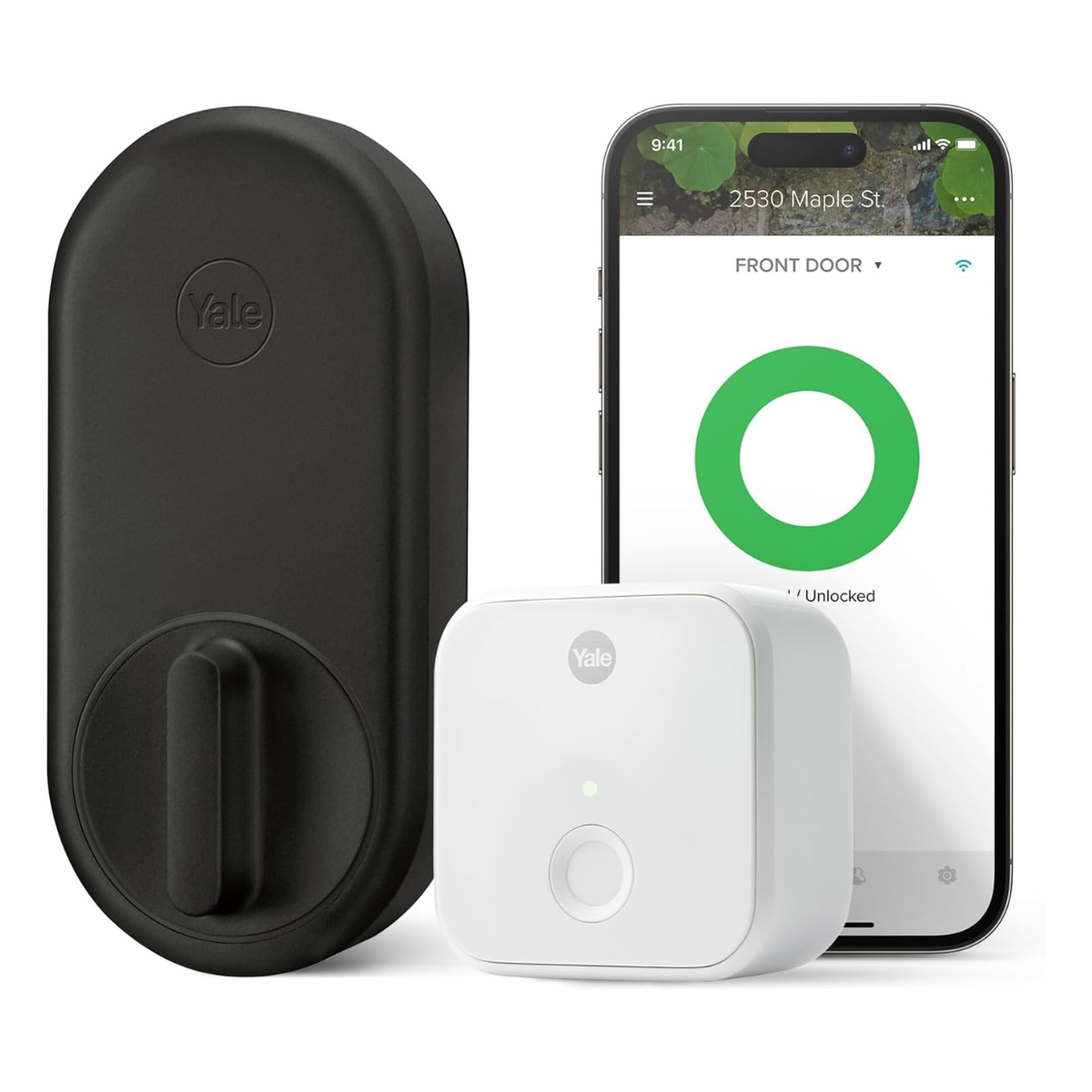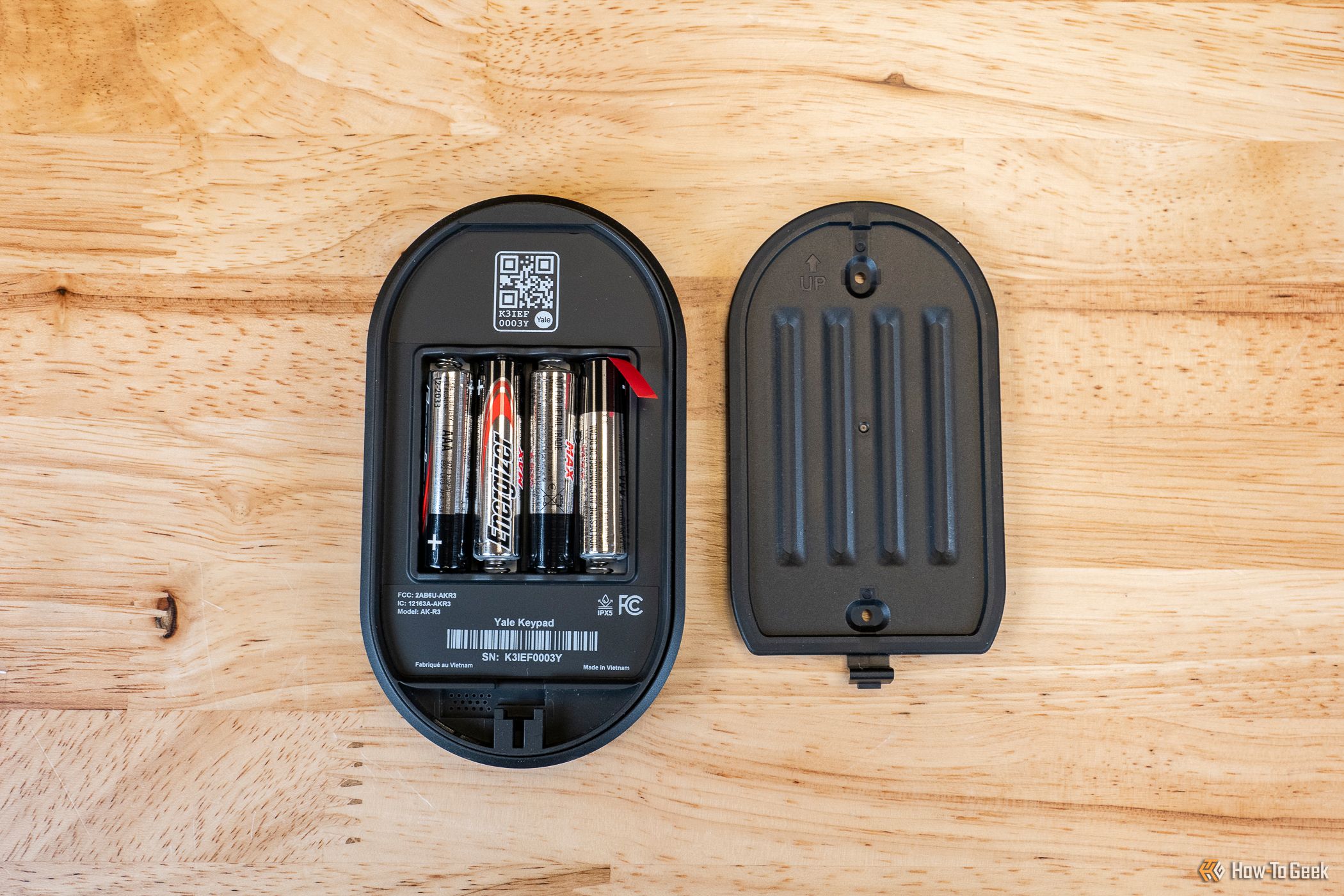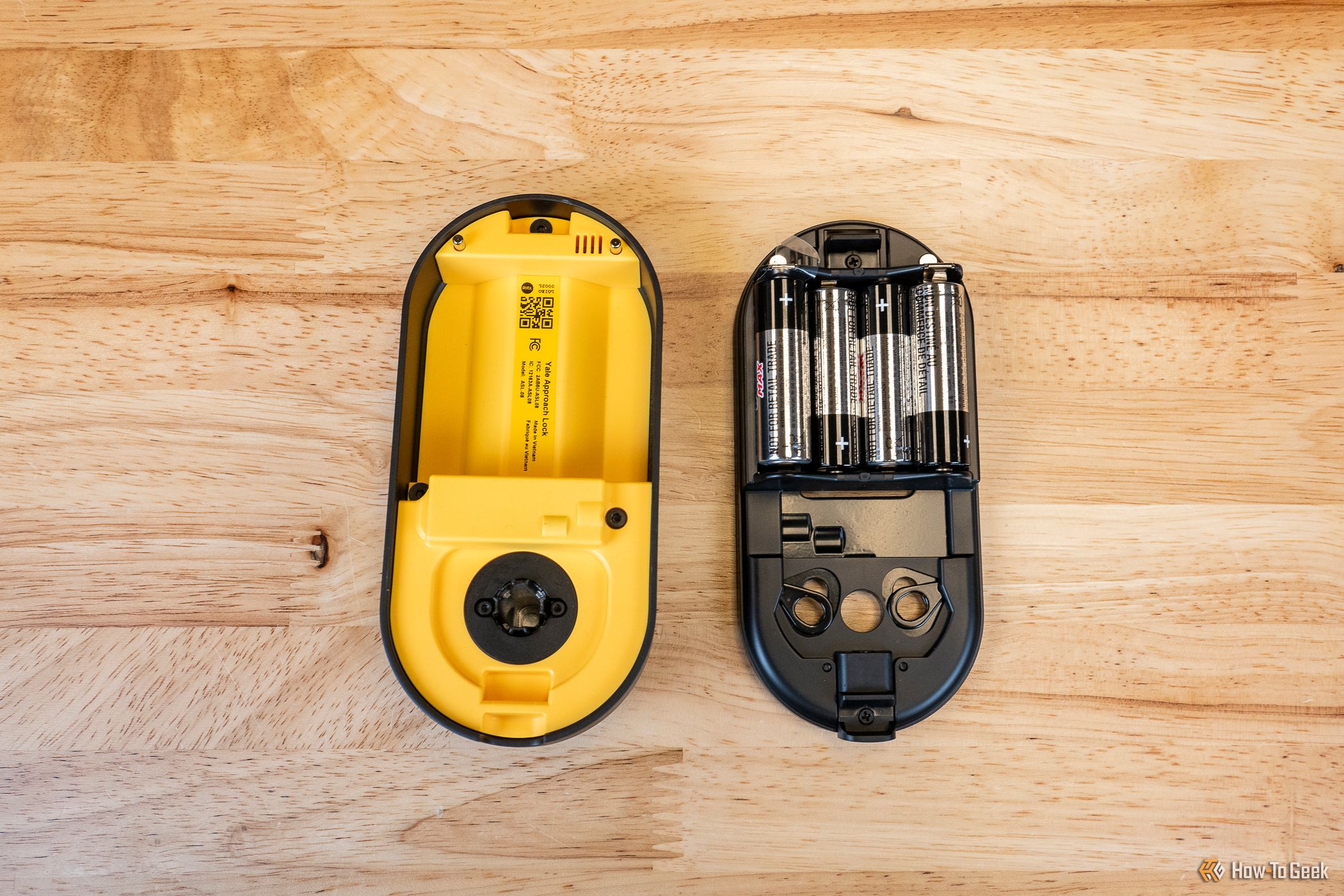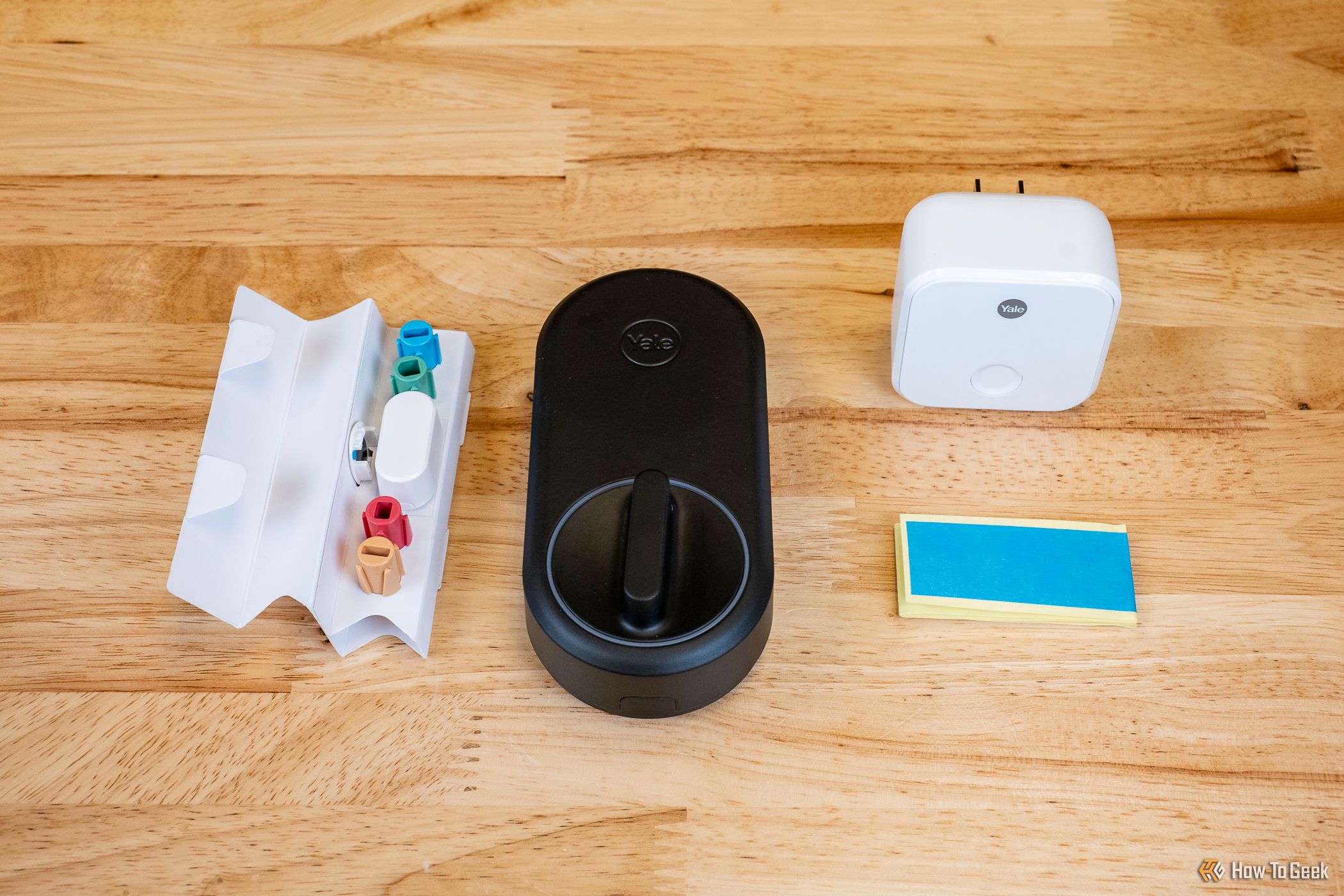Key Takeaways
- The Yale Approach Lock retrofits existing deadbolts easily with Wi-Fi for keyless access.
- Installation is simple, the app is user-friendly, and the design is minimalist and modern.
- Auto-Lock feature and remote access work seamlessly, but the smart lock lacks a battery life indicator.
Far more than its “baby’s first smart lock” appearance may suggest, the Yale Approach Lock with Wi-Fi lets you easily retrofit your existing deadbolt to be web-connected. It installs fast, works great, and is supported by a rock-solid companion app. If only Yale had gone with a rechargeable battery, instead of four standard AA ones, things could have been even better.

Yale Approach Lock
This sleek and modern lock seamlessly integrates with your front door and makes accessing your home simpler and more convenient than ever before. The Yale Approach lock installs on the inside of your door without replacing your existing deadbolt, so no DIY experience is needed, and you can keep your keys.
- Brand
- Yale
- Connectivity
- Wi-Fi, Bluetooth
- Integrations
- Alexa, Google Assistant
- Battery
- AA (4x)
- Hub Required
- Yes (comes with it)
- Dimensions
- 5.1 x 2.6 x 1 inches (129.5mm x 66.04mm x 25.4mm)
- Works over Wi-Fi and Bluetooth
- Simple install that uses your existing deadbolt
- App is easy to use
- Compatible with several voice assistants
- Minimalist design
- Requires separate Wi-Fi module
- No battery life indicator for the lock
Price and Availability: A Couple of Options
The Yale Approach Lock retails for $130 and is available now through multiple retailers. For a little more, you can spend between $180 and $200 to purchase the Approach Lock with the Yale Smart Keypad.
Specifications
- Brand
- Yale
- Connectivity
- Wi-Fi, Bluetooth
- Integrations
- Alexa, Google Assistant
- Battery
- AA (4x)
- Hub Required
- Yes (comes with it)
- Dimensions
- 5.1 x 2.6 x 1 inches (129.5mm x 66.04mm x 25.4mm)
Design: Modern Cosmetics
For renters, students, and those of us looking to add enhanced security to our homes (which you can also do with one of these great home security systems), the Yale Approach Lock is a savvy investment. At 5.6 inches tall and 2.6 inches wide, Yale’s retrofit assembly is installed inside your home or property. You’ll keep using the exterior lock and deadbolt, so don’t accidentally toss any screws in the garbage.
Available in Black Suede or Silver, the Approach Lock is powered by four AA batteries, which are provided in the box. Before installing, you’ll want to make sure you have enough space above your doorknob for the Approach Lock. Initially, I thought the door that I planned on mounting the smart lock to wasn’t going to work out, but everything ended up fitting in the end.
A word of advice: Hold the Approach Lock’s backplate up against the spot you plan on mounting it to. If there’s enough space between your doorknob and the mount, the Approach Lock will snap into place without a problem.
Every Approach Lock also comes with a Yale Connect Wi-Fi bridge and a magnetized DoorSense module. The former requires an AC outlet and is about the size of a doorbell chime or smart plug. The latter is no bigger than my thumb and is designed to be mounted on the door frame or jamb. Additional contents include installation hardware and user manuals.
Installation and Setup: Just Bring a Screwdriver
Getting the Yale Approach Lock out of the box, mounted, and configured doesn’t take long at all. The only tool you’ll really need is a screwdriver, which you’ll use to remove your existing lock screws (don’t get rid of these!). Yale was also kind enough to provide a small strip of painter’s tape you can use to hold your exterior lock in place. I learned the hard way that you’ll definitely want to use the tape, but only after my door lock fell to the ground numerous times.
Once your interior lock is removed, use the screws you saved to secure the backplate. The motorized Approach Lock is powered by four AA batteries, which isn’t abnormal for other smart locks we’ve called attention to. What I did think was strange though, was how Yale seems to have designed the battery compartment so that the far-left and far-right batteries are always loose. I can’t tell you how many times one or both would fall out during the installation process.
I did like how easy it was to just snap the Approach Lock onto the backplate. Once seated, the only way to remove it is by pressing an unlock pin at the bottom of the module, and then pulling the assembly up and off.
As far as setup goes, you’ll need to download the Yale Access app (for iPhone and Android devices). Once you create a free Yale account, tap “Set Up a Device” to begin configuring the Approach Lock. After a quick firmware update, I moved on to installing the Yale Connect and DoorSense module.
After the Connect finishes updating, I recommend performing a deadbolt calibration. I was having issues getting the Approach Lock to fully extend my deadbolt, but this problem disappeared after I took a couple of minutes to get things fine-tuned. You can find the “Calibrate” option on the “Lock Settings” screen, housed under “Utilities.”
Using the Yale Approach Lock: More Pros than Cons
I had a couple of issues when using the Yale Approach Lock, but for the most part, I was very satisfied with my overall experience. So how about we get the cons out of the way?
First and foremost, the Auto-Lock feature was a little wonky. It worked perfectly fine for me when I first enabled the setting, but then it stopped working all of a sudden. I tried turning the feature off and back on in the Yale Access app, and disabling and re-enabling the lock’s location permissions in my iPhone settings. It wasn’t until I did a hard reset of the Yale Approach (I pulled two batteries out, waited 10 seconds, and re-inserted them) that the Auto-Lock started working again. This issue didn’t resurface again.
I also noticed that several device settings couldn’t be adjusted when my iPhone was out of range. Whenever the Approach would connect to Wi-Fi (the smart lock automatically switches between Wi-Fi and Bluetooth, based on what the best signal is at the time), a “Bluetooth Connection Required” message appeared next to every automation feature. I don’t have much to say about this, other than I didn’t like not being able to adjust certain lock settings from just a couple of rooms away, solely because the Yale Approach wanted Bluetooth instead of Wi-Fi.
But besides those two complaints, everything else about the Yale Approach worked flawlessly. Remote locking and unlocking worked great, as did the One-Touch Keypad locking feature (press and hold the Yale button on the keypad to lock the door). I was even able to set up an Alexa Routine that turned on my living room lamp whenever the Yale Approach was unlocked.
The Door Ajar setting was convenient, too. That little DoorSense module was smart enough to detect my door being left open; and I had the Yale Access app set up to send me a Smart Alert if the door wasn’t closed within one minute.
Using the Yale Access App: Screens and Menus You’ll Want to See
I love a clean-looking companion app, and the Yale Access delivered screens and menus that were easy to navigate and understand. I was surprised that the app didn’t offer more settings and customizations. This made me happy though, as I feel that many smart device makers tend to overwhelm users with tons of options they’ll likely never use.
When you launch the app, you’ll be on the Keychain page. If you have Yale devices at more than one property, this is where you’ll select the residence or business you want access to. After making your selection, you’ll be brought to the home page. There’s one interactive feature on this panel: lock and unlock. Tap the green icon to lock, and the red one to unlock.
I loved the “Activity” tab. This scrollable dashboard keeps a log of all the locks and unlocks performed by the Approach Lock. You’ll also be able to see who or what did the locking or unlocking.
The “Guest List” tab is where you’ll go to set up numeric codes for your Approach Lock’s keypad (if it came with one, or you purchased it after the fact). I thought it was odd that there wasn’t a dedicated code entry field in any other part of the app. The lack of this simple UI element had me thinking the code was created on the keypad itself.
One major complaint here: Unfortunately, the Yale Access app doesn’t have a battery life indicator as part of its UI. If the batteries start running low, you will receive a notification, but there’s still no way to check how much charge is left before these low-battery alerts go out. Maybe standard AA batteries were a way to cut engineering costs. A rechargeable lithium-ion battery pack for the Approach Lock makes more sense to me though.
Should You Buy the Yale Approach Lock with Wi-Fi?
The Yale Approach Lock with Wi-Fi isn’t the best smart lock ever made, but it’s a fantastic way to add security to an apartment home, dorm, business, or other important locations. It’s also a terrific buy for those of us operating Airbnb rentals. All your guests will have to do is download the Yale app and input the lock code you’ve assigned to them.
Want even more front door security? Why not add one of these excellent video doorbells to your property?

Yale Approach Lock
This sleek and modern lock seamlessly integrates with your front door and makes accessing your home simpler and more convenient than ever before. The Yale Approach lock installs on the inside of your door without replacing your existing deadbolt, so no DIY experience is needed, and you can keep your keys.
- Brand
- Yale
- Connectivity
- Wi-Fi, Bluetooth
- Integrations
- Alexa, Google Assistant
- Battery
- AA (4x)
- Hub Required
- Yes (comes with it)
- Dimensions
- 5.1 x 2.6 x 1 inches (129.5mm x 66.04mm x 25.4mm)






